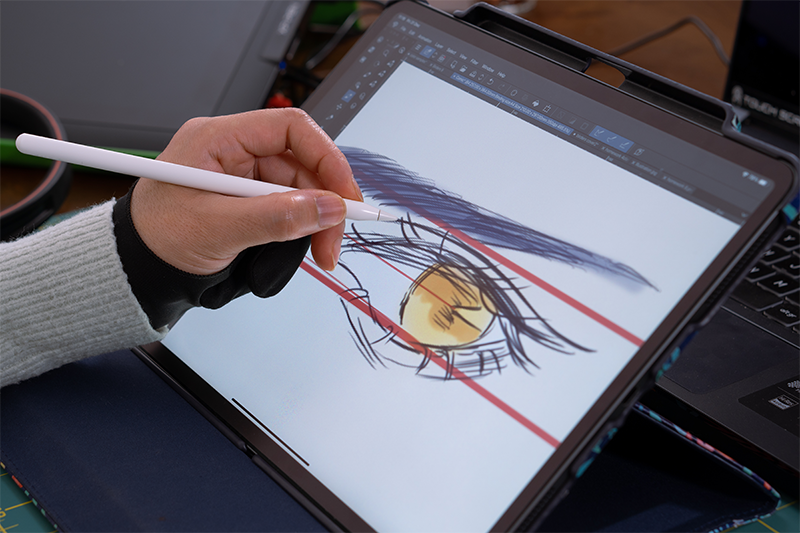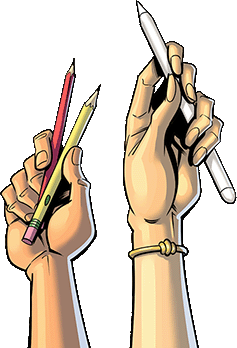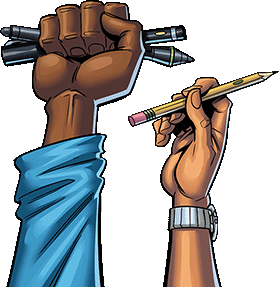How to Design Manga
February 22, 2023
With its unique storytelling style and captivating characters, manga has inspired many artists and storytellers to create their own stories in this medium. Understanding how to design manga can be challenging, especially for beginners. From developing the concept and characters to storyboarding, inking, and coloring, there are many aspects to consider.
Whether you are an aspiring manga artist or just interested in learning more about manga design, the following tips can provide the essential tools and techniques you need to create your own manga.
How to Design Manga: Understanding the Basics of Manga Design
Manga is known for its unique visual style that sets it apart from other forms of comic art. To design manga effectively, it is essential to understand the basics of manga anatomy, poses, expressions, and line work.
- Manga anatomy: One of the critical features of manga is the exaggerated proportions of the human body. For example, manga characters often have larger heads in proportion to their bodies, with elongated limbs that help create a dynamic and visually interesting look.
The eyes are one of the most important facial features in manga, and they are often much larger than in real life. The nose is typically small and often represented as a simple line or dot, while the mouth is small and usually drawn with a curve or line. - Manga poses and expressions: Manga characters are often depicted in dynamic poses that convey emotion and movement, making it an essential skill for any manga artist to master. Experiment with different viewing perspectives to add depth and interest to your scenes, creating a sense of drama or emphasizing a particular emotion.
-
Line work, shading, and tones: Manga is known for its distinctive use of lines to convey movement, depth, and emotion. For example, thick, bold lines often convey strength or aggression, while thin, delicate lines can mean a sense of fragility or vulnerability.
Shading is used to add depth and dimensionality to your manga drawings. Adding light and dark areas to your drawings can create a sense of form and texture. Hatching, cross-hatching, and stippling are common shading techniques used in manga.
How to Design Manga: Developing the Concept and Characters
Before you can start designing your manga, you need a clear idea of the concept and characters you want to create. Fan-favorite manga series like My Hero Academia Volume 1 or Death Note are engaging, compelling, and visually interesting.
Some tips for developing a concept and characters to capture your readers’ attention include:
- Brainstorm: Think about the themes and genres you want to explore and the characters you want to create. Consider the setting, the plot, and the overall tone of your manga. Write down any ideas that come to mind, and don’t worry about editing or refining them at this stage.
- Create a synopsis: Try distilling ideas into a brief synopsis or summary once you have some ideas. This clarifies your ideas and gives you a starting point for your manga design.
- Develop your characters: Consider your characters’ personalities, backgrounds, and motivations. What are their strengths and weaknesses? What are their goals and desires? Create detailed character profiles for each of your main characters, and consider how they will interact with each other throughout the story.
How to Design Manga: Storyboarding and Panel Layout
Storyboarding and panel layout are crucial elements in the design of a manga. Storyboarding involves creating a rough visual outline of the story, with sketches of the key scenes and actions. This process allows you to plan the pacing and structure of your manga and ensure that the story flows smoothly from one scene to the next.
Once you have your storyboard, you can begin to work on the panel layout. This involves deciding how to divide the scenes into individual panels and arranging them on the page to create a visually engaging and dynamic composition. The panel layout is essential in conveying your manga's action, emotion, and dialog, so experiment with different layouts and styles until you find the right one for your story.
How to Design Manga: Inking and Coloring
Inking and coloring are the final stages of the manga design process, where the sketches are polished and refined. Inking is tracing over pencil sketches with ink to create a final, clean line art. It is vital to use the right tools and techniques to create crisp, consistent lines that enhance the visual impact of the manga.
Coloring can be done either digitally or with traditional media. Choosing the right color palette can significantly influence the mood and atmosphere, convey emotion, and accentuate the action, making the manga more dynamic and engaging.
Digitally sketching, inking, and coloring your comics can be an effective way to design your manga and make it easier to upload your work for printing.

Preparing Your Manga for Printing
Preparing a manga for printing is critical in ensuring that the final product looks professional and visually appealing. This involves converting the artwork and text into a format that can be printed on paper and checking for any errors or inconsistencies in the layout, typography, or artwork.
The manga must also be formatted to the correct size and resolution, and any special effects or design elements must be properly incorporated into the final file. Because manga is traditionally smaller, you may wonder, does manga count as a book? While manga is still a comic, there are industry standard printing sizes that you need to adhere to.
The standard size for most US releases is 5.5” x 7.75”, with a perfect-bound, saddle stitch, or square binding. Manga volume covers are typically printed on 80# gloss cover cardstock. The manga cover may also feature special effects such as spot varnish or foil stamping, which can enhance the visual impact of the manga and make it stand out on the shelf.
The inside pages should be 70# uncoated text paper. If you want to print your manga in the reverse order common with Japanese manga, submit your files in the proper reading order, with the first page as the last page in your PDF.
Print Your Manga With Comix Well Spring
For independent manga creators, choose premium comic printing services at Comix Well Spring. Our printing options include full-color and black-and-white interiors, foil, gloss, or matte laminate covers, and sketch covers for personalization.
Once you understand how to design manga, let Comix Well Spring bring your manga vision to life. Contact Comix Well Spring today and learn more about our services.


